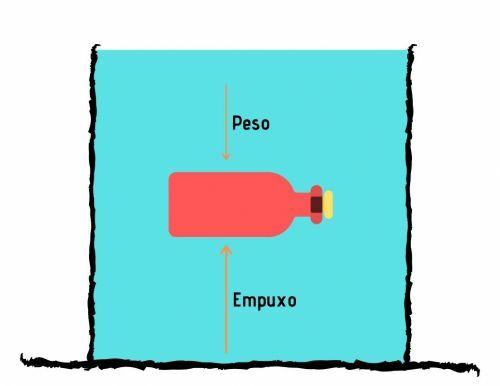DNA (deoxyribonucleic acid) is a molecule that carry the genetic information (the hereditary material) of living beings – including us humans. Physical characteristics, such as skin color or eye color, are present in our DNA.
You can compare DNA with a cookbook because it contains the necessary guidelines for the creation and development of a living organism, be it a tree, a monkey or a human being. These biological instructions contained in DNA are passed from generation to generation through reproduction.

Illustrative image of a DNA molecule.
Where is DNA found
Much of the DNA is found inside the cell nucleus. This explains the “nucleic” in your name. The name of genome is given to the set of DNA present in the nucleus of the cells of a living organism. The nucleus makes up only 10% of the cell's volume. The DNA molecules are curled up inside.
A small part of the DNA (about 1% of the cell's DNA) is found outside the nucleus: in mitochondria, small organs inside cells that generate energy. This type of DNA is called mitochondrial DNA.
DNA structure and composition

DNA has a structure of double helix: a spiral-shaped structure made up of two long strands that are joined by hydrogen bonds.
Each of these strands of DNA is made up of chemical blocks called nucleotides, which are made up of three components: five-carbon sugar, one or more phosphate groups, and a nitrogen base. What differentiates the nucleotides from each other is their base.
The nitrogenous bases of DNA
There are four types of nitrogen bases in nucleotides:
- Adenine (A)
- Thymine (T)
- Cytosine (C)
- Guanine (G)
The genetic characteristics of an organism depend on the order of these nitrogenous bases that make up each of the strands of DNA. In other words: the genetic information of a living being is contained in the sequence of these bases. Our genetic instructions are there. The ATCGCT sequence, for example, can determine a specific physical characteristic, such as eye color.
DNA function
The DNA molecule has information about who we are and what we need to develop. So, while the DNA store our genetic characteristics, it holds the instructions necessary for the formation of proteins, macromolecules that have many vital functions.
The growth and maintenance of our body tissues, for example, depend on the protein synthesis, which is the process of producing new proteins. In this process, DNA plays a central role, as it determines the placement of organic molecules called amino acids. Each protein can have thousands of amino acids in its composition. All proteins in our body are made from the template provided by DNA.
The process of producing new proteins takes place through a few steps. DNA needs to convert amino acids into proteins. Because DNA is inside the nucleus and amino acids are outside the nucleus (in the cytoplasm), proteins called enzymes transcribe DNA information into intermediate copies: RNA.
The first part of this process is the gene transcription. This process takes place inside the cell's nucleus and consists of copying information from the DNA in this messenger molecule called RNA.
The second part of the process is the Translation. Because it is smaller, the newly formed RNA molecule is able to pass through the pores of the nucleus, entering the cytoplasm. RNA navigates through the cytoplasm, transporting amino acids, to the ribosome. Information is translated into the ribosome, where protein synthesis takes place.
See too: Proteins and amino acids.
Differences between DNA and RNA
DNA and RNA, although linked, are different and fulfill different functions. Among the main differences, we can highlight the following:
- The monosaccharide portion of DNA is deoxyribose. In RNA it is ribose.
- The structure is different: DNA is double-stranded, while RNA is single-stranded.
- Nitrogen bases are different: only DNA has thymine, and only RNA has uracil.
The differences become clearer when we look at the functions these molecules play. DNA is concerned with storing genetic information, while RNA (ribonucleic acid) plays a specific role in protein synthesis.
RNA acts directly in the production of proteins. During so-called protein synthesis, it transports genetic codes (stored in DNA) towards the ribosomes, where this information is translated.
The three best known types of RNA are the messenger, O transporter it's the ribosomal. All three participate in protein synthesis. Messenger RNA carries the codes. The transporter takes the amino acids to the ribosome. The ribosomal, as its name suggests, is part of the ribosome, where synthesis occurs.
Read more about RNA and DNA and RNA.
See other meanings:
- meaning of DNA
- Cell
- Gene
- genome



